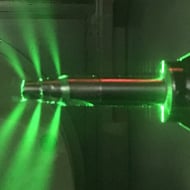Welcome! Here are the website rules, as well as some tips for using this forum.
Need to contact us? Visit https://heatinghelp.com/contact-us/.
Click here to Find a Contractor in your area.
If our community has helped you, please consider making a contribution to support this website. Thanks!
Steam temperature setbacks
Options
jfice13
Member Posts: 23
As a quick aside to another post I made here on the steam wall - I am volunteering at a church. The Pastor asked me if his current regime of keeping the thermostat at 58 for the majority of the time and then raising it to 65 an hour before daily mass and then returning it to 58 again afterwards would save him money over leaving the thermostat set at a constant temperature. My gut feeling is yes, of course you will save money with a 7 degree setback for 20 hours of the day. However, I have often read on here that people say setbacks don't work with steam. What is the reasoning for this?
Thank you.
John
Thank you.
John
0
Comments
-
In a household setting, they don't save enough to be worth the strain it puts on the system. Personally, I don't like waking up in the middle of the night to use the bathroom at 60°.
But in a large, public building that's only used 4 hours a day, I think it makes a lot of sense.Just another DIYer | King of Prussia, PA
1983(?) Peerless G-561-W-S | 3" drop header, CG400-1090, VXT-240 -
I just commented on that on your other thread, @jfice13 . There is a daily Mass? OK. I think for the daily Mass 65 is probably fine; for Sunday, though, I'll stick with 70. Since it is a daily Mass, though, my own feeling is that 7 degrees is probably too much. I'd go with 5 to start, and see if it really will ramp up to 65 in your four hours. If it takes less, I'd shorten the ramp time rather than increase the setback.
To go back to Sunday, though, that means you'd be looking at a 10 degree jump. That's really too much in one pass. I think there that after the Saturday Mass I'd only let it drop back to 62, then bring it up in two stages Saturday night (62 to 66, then a couple of hours later 66 to 70 in time for when people show).
Just how much setback to use is a difficult judgement -- and really hard to get decent numbers on. You may find that you can go deeper, but if you find that you are getting very long boiler run times, with more than a few pressure cycles at the end of the run, I'd cut the setback back to less.Br. Jamie, osb
Building superintendent/caretaker, 7200 sq. ft. historic house museum with dependencies in New England1 -
It all has to do with daily run time as far as if it is more beneficial or not. In my case my Lux thermostat shows me the previous days usage in hours, so I could keep a log and judge if a setback is causing the boiler to run more or less in a 24 hour period. There would be some variations due to outside temperature differences, but those would probably be easy to account for over a period of time looking at the numbers.
If your thermostat or some other method can track the daily run time of the boiler, you may just have to experiment to get the best energy consumption while keeping the "occupied times" at a comfortable temperature.
It would be very interesting to see the numbers of what actually would work out best in your case.0 -
I have been maintaining a larger 1-pipe system at a church and setbacks have saved a good bit over the years—- but as stated above, it has to be done right. Cycling on pressure during a 10-degree recovery is not efficient and will likely cause an overshoot condition.
The previous facilities guy installed a WiFi t-stat to make on-the-fly burns easier, but he had deep setbacks programmed. It worked when half of the radiators never saw steam due to many issues, but now those setbacks cause massive overshoots. The boiler is also oversized by 1600 EDR, so pressure cycling was insane.
The building gets use throughout the week during the day, so I keep everything on a 65-degree hold with a few short manual firings/holds to bump the temp up a little and provide that wonderful radiant heat in the evenings when the old folks have meetings. The schedule varies, so I set reminders based upon the weekly bulletin.
The ramp-up for Sunday begins Saturday evening with a one-degree bump to 66, then to 67 at midnight, 68 at 8am Sunday, and then a final burn at 9:45am set at 69 lands the temperature at a perfect 70 degrees when service starts.0
Categories
- All Categories
- 87.3K THE MAIN WALL
- 3.2K A-C, Heat Pumps & Refrigeration
- 61 Biomass
- 427 Carbon Monoxide Awareness
- 119 Chimneys & Flues
- 2.1K Domestic Hot Water
- 5.8K Gas Heating
- 114 Geothermal
- 165 Indoor-Air Quality
- 3.7K Oil Heating
- 76 Pipe Deterioration
- 1K Plumbing
- 6.5K Radiant Heating
- 395 Solar
- 15.6K Strictly Steam
- 3.4K Thermostats and Controls
- 56 Water Quality
- 51 Industry Classes
- 50 Job Opportunities
- 18 Recall Announcements



